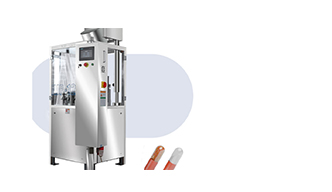
Capsules are a common drug dosage form that wraps drugs or health products in a soluble shell for easy intake and absorption. But many people are curious: How long does it take for a capsule to dissolve after entering the human body? What factors affect its dissolution rate? This article will explore this question in detail.

1. Gelatin capsules
Hard capsules: consist of two hollow shells, usually filled with powdered or granular drugs.
Soft capsules: contain liquid or semi-solid drugs, and the shell is softer.
Dissolution time: in the stomach acid environment, usually 5-10 minutes to start dissolving, 20-30 minutes to completely disintegrate.
2. Plant-based capsules
Suitable for vegetarians or people who are allergic to animal gelatin.
Dissolution rate is similar to gelatin capsules, but may dissolve faster in high humidity environments.
3. Enteric-coated capsules
The outer layer is specially coated to make it insoluble in stomach acid until it enters the small intestine (pH ≥ 5.5) to start releasing the drug.
Dissolution time: usually takes 1-2 hours to dissolve after reaching the intestine.
1. Oral administration and swallowing: The capsule is taken orally, taken with water, and enters the stomach through the esophagus.
2. Retention in the stomach: When ordinary capsules come into contact with gastric acid, the shell absorbs water and softens, dissolving and releasing the drug within 5-30 minutes. Gastric peristalsis helps mechanically break the capsule and promotes the mixing of the drug with digestive juices.
3. Sustained-release capsules: After the outer shell disintegrates, the internal sustained-release structure gradually dissolves or diffuses in the gastrointestinal tract, and the drug is slowly released at a rate lasting from several hours to 24 hours.
4. Absorption into the bloodstream: The released contents, such as medications or supplements, pass through the stomach or small intestine walls into the bloodstream and begin to work.
The dissolution time of the capsule is affected by many factors, including the characteristics of the capsule itself, the physiological conditions of the human body. The following is an analysis of the key factors:
1. Capsule shell material
Gelatin capsules: dissolve faster in gastric acid.
Plant capsules: dissolve at a similar rate to gelatin, but may be faster in high humidity environments.
Enteric-coated capsules: resistant to gastric acid, need to reach the small intestine to dissolve, delaying 1-2 hours.
2. Capsule Contents
Powder: Small, dry particles. Mixes easily with gastric fluid. Dissolves quickly.
Liquid: Drug in liquid form. Encapsulated for stability. Releases quickly after shell dissolves.
Granules: Small, round particles. Often used for controlled release. Dissolves slowly and gradually.
3. Human physiological factors
Gastric acid environment: A strong acidic environment accelerates the dissolution of gelatin capsules; insufficient gastric acid may delay dissolution.
Gastric emptying rate: When the stomach is empty, the capsule enters the intestine faster. Patients with a high-fat diet or gastroparesis may delay gastric emptying and prolong the capsule's residence time in the stomach.
Age: Elderly people have decreased digestive function and may dissolve more slowly.
Disease impact: Diseases such as gastritis, gastric ulcers, and intestinal obstruction may change the dissolution rate.
What machine is used to make capsules?
Automatic Capsule Filling Machine: The automatic capsule filling machine can automatically complete the feeding, separation, filling, and locking of empty capsules. It has a compact structure, low noise, high precision, and stable operation. It is suitable for capsules of various specifications and has a high capsule qualification rate.
The dissolution time of the capsule is the result of the dynamic coordination between the dosage form design and the human physiological environment, and is also regulated by factors such as drug characteristics and administration methods. By precisely controlling these factors, the drug can be released quickly, delayed or continuously at the target site to meet different treatment needs.

GET A QUOTE